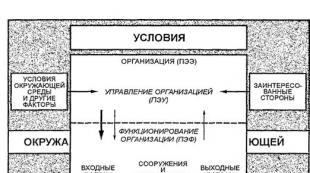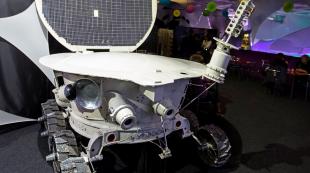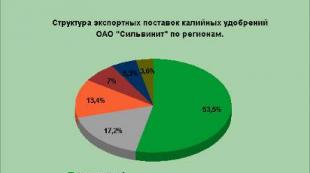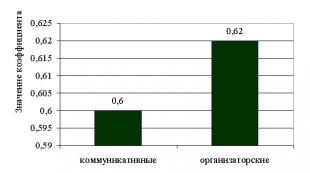Is the canteen profitable? MSU student canteens: a look from the inside. Which okved to indicate when registering a canteen?
“Good Deed” is owned by people well known to lovers of cheap prices - “O.G.I. Products”, who 15 years ago turned Moscow public catering upside down with their “O.G.I. Project”. The canteen at the Kursky station does not pretend to be a revolution, except for the appearance of a decent and inexpensive place in the most unfriendly transport hub of the city - a set lunch will cost 185 rubles. It’s also worth going for the stunningly beautiful interiors: stained glass windows, paintings and flowers in tubs create a rare mood when you really, really don’t want to leave Moscow on the first train.
"Stolovaya" at the fish market

The proximity of the mosque leaves its mark on the catering in the fish market building: everywhere here is halal and everywhere is delicious - it’s worth visiting both the more authentic teahouse to the right of the entrance and the European-style canteen at the far end of the building - however, it’s worth going to it first of all Central Asian dishes. Soup will cost 75 rubles, hot dishes are more expensive - from 85 rubles. for meatballs up to 150 rub. for a lagman, but that alone is enough to satisfy you for half a day ahead. Drinking alcohol, unfortunately, is prohibited - but you can try to negotiate, fortunately, Glavpivmag is located nearby, dispensing fashionable craft beer and cider; Oddly enough, it is better to buy fish and caviar in other places.
- Address Pyatnitsky lane, 2, “Pyatnitsky”, 1st floor
- Mode Mon-Fri 10.00–18.00
Refectory next to the Intercession Cathedral

The Old Believer Intercession Cathedral is located far from tourist or any other routes - in the Rogozhsky village, but the local refectory is not included in the list of the best establishments in the city due to a misunderstanding. Specialties: shaggy milk mushrooms, yeast-free hearth bread, pies with berry filling, pancakes with white and red fish, oatmeal jelly, white kvass, sbiten and kombucha. Additional advantages: the architectural ensemble of the monastery, opening hours (from 7 am to 11 pm), continuously singing canaries in cages and the opportunity to meet the actors of the TV series “Interns”, filmed in pavilions nearby, at dinner.
- Address Rogozhsky Poselok, 29, building 9
- Opening hours Mon-Sun 7.30–23.00
Canteen at the Pension Fund

The most classic dining room on the list is a place to be nostalgic for Soviet times and eat without the risk of poisoning. True, despite the ascetic interior of the basement, the prices here are higher than those of competitors in the set lunch market (soup 70 rubles for half a portion, hot dishes 150–170 rubles) - but in the Tverskoy Boulevard area there are not particularly such prices, so the PFR canteen in Media employees, office clerks, residents of surrounding houses and, of course, employees of the foundation itself flock to lunch. At the same time, you can inquire about the fate of your pension, but it is better to do this after eating - otherwise you may inadvertently spoil your appetite.
- Address Tverskoy blvd., 18, bldg. 1
- Mode Mon-Fri 9.00–18.00
Buffet at the Arbatskaya metro station on the Filevskaya line

Every day, 200–300 people pass through the buffet, tucked away at the far end of Moscow's most deserted metro station - a lot for a tiny space with a few tables and very little compared to the subway's daily throughput of ten million passengers. Metro employees are served without a queue, but any visitor to Arbatskaya can buy a ham sandwich (28 rubles), a Cosmos cutlet (89 rubles) or a compote (25 rubles); In addition to baked goods and hot dishes, the buffet offers an assortment of wealthy general stores - from custard noodles to canned fruits and vegetables. Unfortunately, there is no toilet either in the buffet or at the station.
- Address metro station "Arbatskaya" Filevskaya line
- Mode Mon-Fri 9.30–18.30
"Gurmanika" in the South Port

The fantastically beautiful building with columns on the territory of the Southern Port conceals within itself not a recreation center or a mausoleum, but a dining room - and a very outstanding one. Soups are sold for 50–60 rubles, hot dishes do not cost more than a hundred, the recipe is sometimes surprising (chicken noodle soup, for example, contains potatoes), but, according to the chefs, this was done solely at the request of the port employees. After lunch, it's worth going for a walk - around the sculptures of the fifties, colorful shipping containers and one of the best views of the city. You can get into the dining room using a pass - ordered in advance by phone - or through a hole in the fence, which is easily found to the left of the main entrance.
- Address 2nd Yuzhnoportovy Ave., 10, building 14
- Mode Mon-Fri 10.00–16.00
Canteen business- This is a very profitable and profitable type of activity. People will always find a little money to have a snack, and sometimes even a hearty lunch.
Here you will need to focus on the cost of your lunches so that they are quite acceptable, as well as on the taste of the finished product. Consider creating a small dining room.
Such a cafeteria should be placed in places where people will always have breakfast or lunch, such as universities or large office buildings.
Such a dining room will require an area of about 20-30 sq.m., if it does not have its own kitchen. It will require a couple of microwave ovens, maybe more, a refrigerator, an electric kettle, a display case, 2-4 tables and chairs (at the start you can save a little and rent them), vending machines such as coffee machines, equipment for making pancakes will not hurt , donuts, vending machines for cola, forfeits, pepsi, etc. Vending equipment can be supplied over time, or you can find companies that will supply it to you for free for the opportunity to sell their goods.
After the influx of profits begins, you can buy them yourself. To open such a business, you will need registration of a private entrepreneur and permission from the SES. All your employees will have to undergo a medical examination and have a health book.
Your profit will come from the sale of ready-made meals; their variety should be at least 10 dishes, preferably 15-20.
The price for lunch should not be set high, because... the main profit will come from turnover. You will need to find a company that produces ready-made meals, does it regularly and their food is very tasty. When receiving products from these companies, you will need to make your own markup.
You can also make a small profit from renting your microwave ovens and kettles. Allowing all customers to warm up food they brought with them. If you think that this will lead to a decrease in the sales of your goods, then you are mistaken.
Firstly, there are not many people who carry lunches with them, and secondly, people who come with their own lunch will definitely buy tea, coffee, a sandwich, salad, disposable tableware, napkins or something else from you. Much will depend on your assortment.
Among the staff, you will need a salesperson (at the initial stage you can work as one yourself) and a cleaner. Preferably they should be pleasant in appearance.
Another very important factor will be the atmosphere itself; it should be very cozy and comfortable for eating.
People really love places where you can sit comfortably, eat deliciously and not expensively, then you definitely won’t end up with customers. This is how he is
Food is a significant expense item. There are various occasions when you eat outside the home. During lunch, the city cafes are crowded with students, white-collar workers, and tourists. But is it possible to have a hearty meal in Moscow for 200 rubles? About inexpensive establishments with quality cuisine - in our material
Funky Lab
A cozy gastrobar with a steampunk interior is located in the center of Moscow, near the Tretyakovskaya metro station. The creative concept of restaurateur Alexander Viazhsky is similar to a construction set - both in terms of design and in matters of dish presentation. So, borscht here is served in two plates: the grounds are separate, and the broth is separate. Whether to eat it alternately or mix it is up to the visitor to decide. Same with salmon tartare and even ice cream.
The cook at Funky Lab is a real Frenchman, so the menu includes such dishes as beef Bourguignon, a variety of steaks and sauces. “Golden” time in the gastrobar is from 12:00 to 16:00. It is during these hours that you can taste an inexpensive soup of the day and a delicious budget salad for 120 rubles.
Location: st. Bolshaya Polyanka, 7/10, building 1
Working hours: from 12:00 to 00:00 seven days a week
Photo: Funky Lab Photo: Funky Lab
Photo: Funky Lab
 Photo: Funky Lab
2
Photo: Funky Lab
2
"Dining room No. 57"
It would seem that the time of canteens is irrevocably passing. But not in the case of this authentic culinary establishment, where dishes are prepared exclusively according to a book of recipes for delicious and healthy food. Popular among Muscovites and guests of the capital, “Dining No. 57” is located in one of the most important stores in Moscow - GUM. Probably, the owners of the establishment are very generous and hospitable people, because they often organize promotions during which you can save a lot.
In addition to traditional meat and fish dishes, the dining room has a rich vegetable, fruit, lenten menu, and also has baked goods to order. Themed dishes (for example, soldier-style potatoes, Strawberry Heart sponge cake) await visitors on calendar holidays. Many people come here for a sip of nostalgia for the Soviet past. The cost of dishes ranges from 60-80 rubles.
Location: GUM, 3rd line, 3rd floor
Working hours: from 10:00 to 22:00 daily
 Photo: otzyv.ru
Photo: otzyv.ru  Photo: anothercity.livejournal.com
Photo: anothercity.livejournal.com
 Photo: gastronom.ru
Photo: gastronom.ru "Domozhilov"
Named after brand chef Ivan Domozhilov, the original buffet with 70 seats is located in the Artplay design center. The huge panoramic windows of the studio space overlook Syromyatnicheskaya Embankment. Instead of a menu, there is a display case with dishes. Self-service and disposable tableware do not overshadow the rich assortment of baked goods (about 140 varieties).
Among the dishes prepared in the Art Clumba kitchen: borscht with tongue, mushroom stroganoff with chicken, baguette with Tambov ham, nicoise with tuna, salads, soups, cheesecakes - and all this at very affordable prices. Special offers on the menu can be read by the LED ticker.
Location: st. Nizhnyaya Syromyatnicheskaya, 10, building 2
Working hours: from 10:00 to 22:00 seven days a week
 Photo: domogilov.ru
Photo: domogilov.ru  Photo: "Domozhilov"
Photo: "Domozhilov"
 Photo: "Domozhilov"
4
Photo: "Domozhilov"
4
"Cowberry"
The culinary cafe with the name berry is located in the very center of old Moscow - not far from Kitay-Gorod. The menu includes inexpensive home-style dishes: herring under a fur coat, bean soup, Greek moussaka, empanadas, pies, etc., which can also be ordered in a take-away container. Brusnika has a huge assortment of sweet pastries and desserts (from 60 rubles). And one of the most popular drinks is chamomile tea.
The establishment is also known for its well-chosen music, so here you can chat and even whisper in a comfortable environment.
Location: st. Maroseyka, 6-8, building 1
Working hours: from 08:00 to 23:00 seven days a week
 Photo: "Cowberry"
Photo: "Cowberry"
 Photo: "Cowberry"
Photo: "Cowberry"
 Photo: "Cowberry"
5
Photo: "Cowberry"
5
"Baking and pilaf"
This Uzbek restaurant is a creative project of young restaurateur Maxim Agashkov. Its name speaks about the dominant dishes. An inexpensive establishment with a simple, cozy interior in white and red tones is located near the Taganskaya metro station. Bestsellers: samsa, pies, chicken broth, manti with lamb, lagman. But the main dish of the restaurant is pilaf, which is prepared by Uzbek chefs in a huge 80-liter cauldron (for 150 servings). There is only one step from maximalism to minimalism: “Baking and Pilaf” can accommodate only 12 visitors.
Location: 1st Goncharny Lane, 4\3
Working hours: daily from 08:30 to 22:00
 Photo: Vera Mishurina
Photo: Vera Mishurina
 Photo: the-village.ru
Photo: the-village.ru  Photo: the-village.ru 6
Photo: the-village.ru 6 "Marukame"
The noodle shops of the popular Japanese chain Marugame Seimen (whose brand dish is udon noodles with various additives) are an excellent option for a tasty and inexpensive lunch ranging from 180-200 rubles. The network of Moscow cafes is modeled after Asian prototypes: a small hall, a separate kitchen with a distribution line connecting the locations. All dishes are prepared on site: from the large cauldron in which the famous thick Sanuki Udon noodles are cooked, steam dissipates like mist throughout the hall.
On the menu: kamaage udon (noodles with dashi broth sauce), ontama bukkake udon (noodles with soft-boiled egg), tonkatsu udon (noodles in pork rib broth with pickled egg), etc., as well as salads and rolls.
 Photo: "Marukame"
Photo: "Marukame"
 Photo:
Photo: Soviet-style catering: Where to take a foreigner or eat inexpensively yourself in the center of Moscow.
In the very heart of the capital, in GUM, there are restaurants, bars and cafes for every taste, but you cannot call them budget ones even if you want to. The exceptions among the expensive Bosco establishments are the Festivalnoe cafe and Canteen No. 57, which send nostalgic citizens back to the times when the oldest Moscow store was a symbol of Soviet shopping, and only here it was possible from time to time to “get” or “tear off” various scarce goods . There has been no shortage for a long time (except perhaps money), but the surroundings, menu and prices of the Soviet “canteen” in GUM have been successfully recreated.
If, while walking along Red Square and around it, you get hungry, and you don’t want to go down to the Okhotny Ryad shopping complex and sit down at fast food establishments, you can go to GUM and the third line, 3rd floor (from the Ilyinka side), to Dining Room No. 57. Here you will find classic catering dishes - soups, salads, main courses, dessert casseroles and much more. “And the compote?” - you ask. Compote, of course, too.
Unlike Soviet times, the quality of food in this stylized cafe is not satisfactory, especially with such a busy place: you often have to stand in a huge queue, there are so many people who want to dine here. The prices are low (see below), and the taste of the food, as many visitors assure, is “exactly like in childhood.”
If you want to show something interesting to your foreign friend, then while walking around GUM, again, you can take him to Canteen No. 57, accompanying the snack with a story about Soviet catering and traditions.
Canteen No. 57 is open, like GUM, from 10.00 to 22.00. Here you can have breakfast, lunch and dinner, surrounded by workers in Soviet chef's coats and caps, simple tables, dishes and rainbow umbrellas included.
Prices in Canteen No. 57
Soups:
Ukrainian borscht with pampushka (208 g/15 g) - 70 rubles;
Chicken noodles (200 gr/25 gr/15 gr) - 70 rubles; Mushroom noodles (200 g / 30 g) - 70 rubles;
Potato soup with meatballs;Pea soup;Fish soup; Rassolnik "Leningradsky"; Bean soup with meat - 70 rubles;
Fresh cabbage soup (200 g / 15 g) - 70 rubles
Pumpkin puree soup; Broccoli puree soup (250 g / 5 g) - 120 rubles.
Salads
Herring under a fur coat (130 gr) - 95 rubles; Squid salad (120 gr) - 95 rubles; Olivier (130 gr) - 95 rubles; Beetroot with prunes and nuts (150 g) - 95 rubles; Country salad, vitamin salad (120 gr) - 50 rubles; Eastern (120 gr) - 75 rubles; Salad with beef tongue (130 gr) - 120 rubles; Lettuce leaves with tomatoes (100 g) - 150 rubles.
Hot dishes:
Pike perch with Polish sauce (80 gr/30 gr) - 270 rubles; Fried flounder (350 gr) - 390 rubles;
Roast beef (150 gr) - 390 rubles;
Steamed turkey cutlet, “Kyiv” cutlet, “Pozharskaya” cutlet (90 gr) - 150 rubles; Home-style cutlet (80 g) - 110 rubles;
Fried chicken (150 gr) - 260 rubles;
Boiled sausage (50 g) - 50 rubles;
Boiled beef tongue (100 g) - 280 rubles;
Goulash (60 gr/60 gr) - 220 rubles;
Dumplings with potatoes (130 g) - 50 rubles.
Side dishes:
Mashed potatoes (140 g) - 75 rubles; Stewed cabbage (140 g) - 50 rubles; pasta (140 gr) - 40 rubles; Boiled rice (140 g) - 50 rubles; Boiled buckwheat (140 g) - 50 rubles; Steamed vegetables (140 g) - 90 rubles.
Dessert:
Cake "Potato" - 60 rubles; Cake "Irinka" - 50 rubles; Cake "Sour cream" - 70 rubles; Cupcake with candied fruits - 25 rubles; Walnut ring - 35 rubles.
These are not all the dishes from the menu of Canteen No. 57, but the price level is understandable.
Dining room No. 57 photo






- Pros of this business
- What equipment to choose for the dining room
- How much money do you need to open a canteen?
- Dining room opening technology
- Similar business ideas:
Nowadays, canteens have gained a foothold in the corporate catering market, which is developing extremely dynamically and is very attractive. Catering is more like selling products with predicted demand.
In Soviet times, canteens were, as a rule, classified as sensitive enterprises and organized meals exclusively for their employees. Canteens of this type are still found today, but less and less often and mainly in government institutions.
In addition, cafeterias are making a comeback not only as corporate catering, but also as a new option for dining outside of home or work.
Modern classification of dining rooms
- Closed canteens (intended for feeding groups).
- Open-type dining rooms (serve visitors coming directly from the street).
- Location (canteen at an office center, hospital, factory, holiday home, school canteen).
- Technological principle (dining room with pre-cooking kitchen or industrial (closed) type dining room.
- Form of customer service (distribution line, free flow, with the participation of waiters).
- Form of payment to visitors (cash, non-cash payments using credit cards).
The canteen market today is considered extremely attractive for investors: demand in this market still significantly exceeds supply.
The designer of a canteen faces the main task - the facility must provide the ability to feed a large number of people in a limited time period. The principle of a set menu helps solve this problem: the client is offered a choice of two or three types of set meals. When compiling such complexes, the nutrient content, as well as climatic, age and professional characteristics are taken into account. The set menu has both its pros and cons.
Pros of this business
- No queues, fast customer service.
- Due to the limited number of dishes and the presence of a constant number of visitors, it is possible to draw up a production plan quite accurately.
- The number of canteen staff is small.
- Rational use of equipment.
- Payments to visitors are very convenient.
There is one minus, but a very significant one: limited range of dishes, depriving customers of the right to choose.
The modern format of canteens is free flow. The main principles of this format are affordable prices and self-service. The equipment is arranged according to the island principle, which allows the client to choose the desired dishes himself, moving from one “island” to another. Having chosen what he likes, the visitor goes to the checkout. This format significantly reduces the time spent serving one client, which helps eliminate queues.
The effectiveness of such a format as a canteen is recognized by other players in the segment - restaurants and classic fast food. Various versions of canteens are the most promising type of organizing mass catering. Moreover, the canteen does not compete with restaurants for clientele: people go there to eat, while they go to restaurants for the atmosphere.
To open a canteen, you need to follow a certain algorithm, which is quite complex and lengthy.
Step-by-step plan for opening a dining room
- Opening a canteen is a project, so at the initial stage the future owner of the establishment faces an organizational task. It is necessary to assemble a team ready to solve certain problems associated with the opening. The team consists of two or three people, it is desirable that this group includes someone who at least has a general understanding of the production process.
- The next stage is the creation and approval of the general concept of the future dining room. It is necessary to determine the footage, the concept of the establishment, the work schedule, the expected portrait of the visitor, the interior, and the time frame for the work of the canteen.
- In full accordance with the identified concept of the future establishment, announce a competition and select a canteen design organization. Most often, this service is offered as an additional service by large suppliers of canteen equipment.
- With the help of a designer, create a design project and approve it. The design project reflects the location of various premises - production, auxiliary, administrative, dining room. The project also reflects how all the premises will be decorated.
- Development of a working project. The document contains a detailed description of the canteen's communications: electrical networks, water, sewerage, television and computer networks. The document also includes a plan for the arrangement of equipment and furniture.
- Next, the financial side of the project is calculated. You should plan for at least two years. An important point is the sources of financing (own or borrowed funds).
- Selection of a general contractor for repair work. The contractor can be a serious company or a familiar team from the CIS countries. In this case, everything depends on the scope of work and the willingness of the future owner of the canteen to control the activities of the builders.
- The next stage is the coordination of project documentation with state control bodies: UGPS (Fire Service), Committee for City Property Management, Sanitary and Epidemiological Control (GSEN), Technical Supervision, Committee for Control of the Use of Historical and Cultural Monuments.
- If the first floor of a residential building is used as a premises, it is necessary to transfer the premises to non-residential premises. Although, most often this point is not required, since canteens are rarely opened in residential buildings.
- Repair of the premises in accordance with the project. It is advisable that the organization that prepared the design project monitor the repair work. If the project organization for some reason refused to carry out supervision, the project team will have to do this.
- Carrying out preparatory work for the study of gas communications. In principle, this point can be omitted, since most modern canteens run on electricity.
- Wiring of security, fire, telephone and computer networks in full accordance with the project.
- Wiring of ventilation and air conditioning systems.
- Design installation of water supply, water treatment and sewerage systems.
- Selection, purchase and configuration of canteen automation systems - cash register, warehouse and accounting.
- Carrying out the official handing over of the premises to the state commission, signing acts of the State Sanitary Service, KUGI, Technical Supervision, UGPS, GIOP.
- Purchasing furniture for the dining room, arranging chairs and tables in accordance with the design project. It is advisable to purchase twenty percent more furniture than stated in the project: this way you can avoid problems with inevitable furniture breakdowns in the future.
- Order and supply of necessary technological equipment. It is best to purchase equipment from one organization: this way you can get discounts and decide on the location of warranty repairs and maintenance. Very often, suppliers offer additional warranties for those who purchase turnkey equipment. Equipment is delivered on average in one to two and a half months.
- Purchase of dishes, kitchen utensils, cutlery, glass. All these goods can be purchased from the organization supplying the equipment. It is advisable to purchase twenty to thirty percent more dishes than are required for the needs of the dining room.
- Development and approval of the organizational structure of the institution. It is necessary to decide how many cooks will work in the canteen in the cold and hot shops, cashiers, dishwashers, workers on the distribution lines, support workers and managers. The number of staff is determined based on the expected number of clients in the canteen (in addition, you need to take into account the number of lunches that are supposed to be sent to offices for delivery). It is advisable to start recruiting personnel a month before the planned opening of the canteen, since finding qualified workers is not so easy.
- Instruction and training of personnel.
- Development of advertising materials (flyers, questionnaires, business cards, etc.).
- Preparation of design and ordering of uniforms for staff.
- Concluding an agreement with an advertising agency that will promote the canteen.
- Approval of the design of street advertising and signage on the facade of the building. Coordination of the sign with state supervisory authorities, obtaining permission. Installation of signs and advertising structures.
- Selection of television and audio equipment used in the hall (plasma TVs, speaker systems).
- Purchasing furniture for utility rooms.
- Concluding agreements with food and beverage suppliers.
- The final stage of cosmetic improvements to the premises, cleaning.
- Development of regulations according to which food will be prepared in the cafe and inventory will be carried out.
- Formation of the start menu. It is necessary that the menu include dishes from pork, beef, poultry, and fish. Vegetarian dishes are highly recommended.
- Obtaining permission from GSEN for the assortment.
- Signing contracts with companies involved in deratization, garbage removal and disinfection.
- Signing an agreement with companies involved in servicing computer systems.
- Selection of a medical institution where personnel will undergo medical examination.
- Installation of a payment terminal under an agreement with the bank.
- Development of a presentation for the dining room.
- Registration of cash registers with the tax service.
- Initial purchase of products in accordance with the starting menu.
- Last cleaning of the premises before the start.
- An advertising company targeting potential clients. Notifying employees of nearby offices about the opening of a new catering outlet is considered a very effective way.
- Grand opening.
As you can see, there are a lot of tasks, but none of them are overwhelming. To open a canteen, you need time, a budget, a willingness to take certain risks and a charge of optimism.
What equipment to choose for the dining room
An ordinary canteen may have advantages that allow the establishment to successfully compete with cafes and fast food. First of all, this is the location. It is extremely important that the canteen is located close to its “target audience” - an office center, a student campus, an industrial enterprise, etc.
If the canteen is organized in a small enterprise with up to ten employees, you can get by with the simplest kitchen appliances. For canteens serving 30-100 visitors, a kitchenette without a serving line is sufficient. The canteen with over a hundred seats is equipped with all types of equipment, including distribution lines.
A distribution line is a specific type of table equipment designed for quick delivery of ready-made dishes to the client.
Basic equipment for the canteen: digestive tilting boilers, electric stoves, refrigerated tables, convection ovens, combi steamers, meat grinders, vegetable cutters, potato peelers, boilers, refrigerators, dishwashers, scales. Neutral equipment includes racks, production tables, washing baths, pallets, etc. Kitchen equipment: pots, cauldrons, frying pans, trays, knives, strainers, graters, colanders, stewpans, sauce and pouring spoons, rolling pins, tongs, bowls, bottle openers, etc. For table setting you need trays, plates, spice sets, saucers, cutlery, glasses, glasses and cups.
How much money do you need to open a canteen?
An entrepreneur who decides to open a canteen must immediately calculate the profitability of the business. Experts recommend immediately providing for the main expenses:
- Rent of premises - from one to 1.5 million rubles per year (relevant for Moscow and other large cities).
- Equipment - from seven hundred thousand to 1.5 million rubles.
- Personnel costs - from two million per year (for Moscow and St. Petersburg).
- Transport costs (depend on region).
How much can you earn by opening a canteen?
The income of the canteen consists of profits from the sale of dishes, from money received for banquets, weddings and corporate parties. On average, the canteen pays for itself in one to two years, which is considered an excellent indicator.
Opening a canteen involves certain expenses and risks. There is a lot of work to be done in various areas: approvals, supervision of repairs, recruitment of personnel, work on advertising, etc. It is important to understand that the profitability of a canteen depends on its location: if it is located far from offices and government institutions, the establishment will not pay for itself. If all factors go well, the canteen will be guaranteed to bring a stable income to the owner. After all, the catering market in our country has seriously swayed since Soviet times and people have almost forgotten what inexpensive and high-quality mass catering is.
Which OKVED ID should I indicate when registering a canteen?
When registering a business, you should indicate the main OKVED code 55.51, which is used directly for canteens and public catering places. Additional codes are:
- 30 - activities of cafes and restaurants;
- 40 - bar activities;
- 52 - supply of catering products.
Which tax system to choose
If the size of the hall does not exceed 150 sq. m when registering a canteen you can use UTII or simplified tax system. In the event that the dining room has an area of more than 150 sq. Only a simplified taxation system is suitable. In the event that it is planned to supply lunches to offices, even with a small room, the choice is given to the simplified tax system “income minus expenses”.
What documents are needed to open
To open a canteen you will need to complete a special package of documentation:
- Drawing up technological regulations for the production of dishes;
- Agreements for the provision of disinfection and deratization services;
- Agreements with public utilities for ventilation maintenance, waste removal and disposal;
- Equipment maintenance agreements;
- Availability of a bank account;
- Registering a cash register.
Do I need a permit to operate?
Opening a canteen does not require special licensing. Permits will have to be obtained from the SES, fire inspectorate, and Rospotrebnadzor. Also, the presence of quality certificates for raw materials involved in the food preparation process is mandatory.









